Phrontex is a web application for managing corporate knowledge. It gives you better governance and better documentation, with less effort for users, managers, and auditors.
Trying to manage corporate knowledge as a library of documents, on a shared drive or intranet, is challenging and expensive, and the results are famously disappointing: in most organizations the documentation is hard to use, hard to audit, poorly controlled, incomplete, contradictory, verbose, out of date, and largely unread.
Phrontex deals with these issues. It turns corporate knowledge into a valuable and appreciating asset.
In place of documents, Phrontex is a database of pages, presented as a private website. As a database it gives you precise control over each item of knowledge:
Any user with edit permission can create and edit content, using a simple in-place editor.
Users are responsible only for content: the application handles all the formatting, so your pages automatically have a consistent look and feel.
Edits are not visible to normal users until the update has been approved. At any time there may be an approved version of the page and a draft that is the work-in-progress of the next version. There might also be any number of historic (previously-approved) versions. Normal users see only the currently approved version.
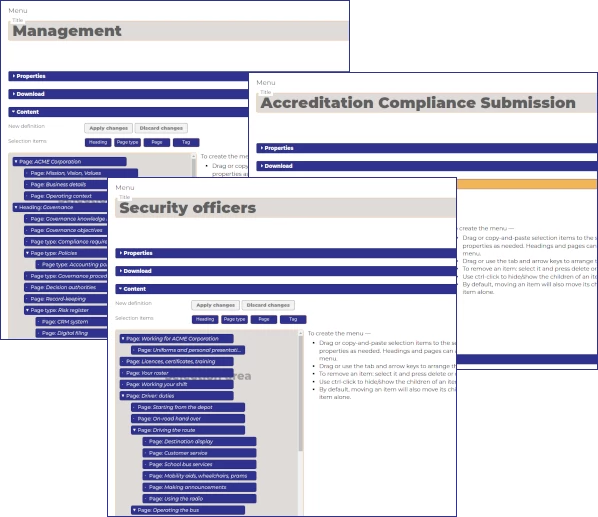
Users select the content they want from a menu. You can have any number of menus, to present and arrange content as is most convenient for different types of user.
You might have a head office menu and a branch office menu, or different menus for management, audit, shop floor, and contractors. All menus draw on the same core content; they differ only in which pages are shown and how they are arranged. Regardless of menu selection, your users are always literally on the same page.
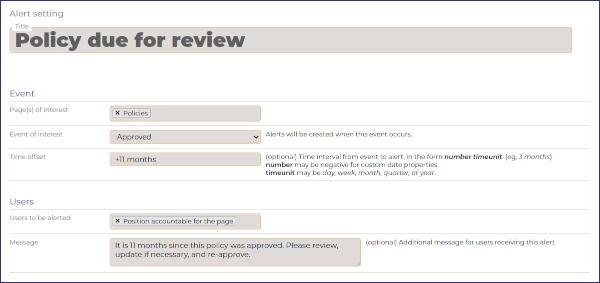
Users can be alerted automatically when there is new or updated content they should be aware of. Managers can be alerted when content under their accountability is due (or overdue) for review.
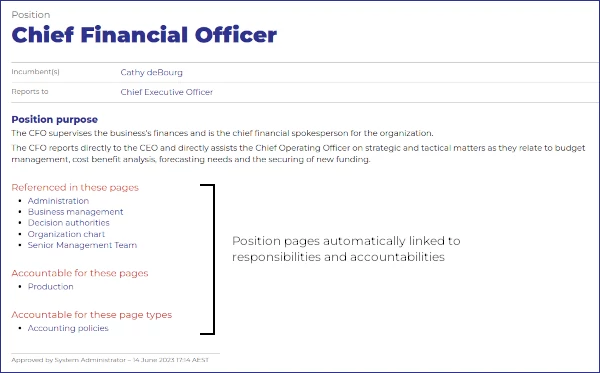
Phrontex automatically tracks the relations between pages. For example, if a procedure refers to a position, the position page will automatically show a link back to the procedure: the position description is automatically kept up-to-date. Conversely, if a page title is changed, every reference to that page is automatically updated to show the new title.
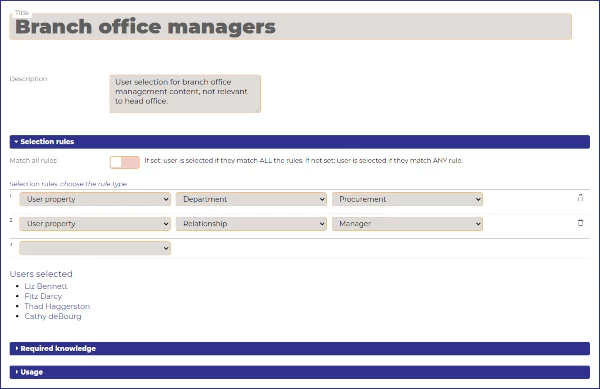
Phrontex gives you precise, auditable control over which users can see what content. Users can be classified by any criteria such as position, seniority, location, division, or jurisdiction; permission to view content can be set for any page, page type, or content division, for users or user groups.
Phrontex gives you precise, auditable control over who can see what. Users can be grouped by criteria such as position, seniority, location, division, or jurisdiction; permission to view content can be set for any user groups, for any page, page type, or content division.
Access settings can be used not only to control for permissions, but to customize content according to user needs. For example, you might have different policies or procedures for different users, according to the state or jurisdiction in which they are working.
You can get a report, for any user, listing the pages they are allowed to view, and showing the date on which they last viewed each of them.
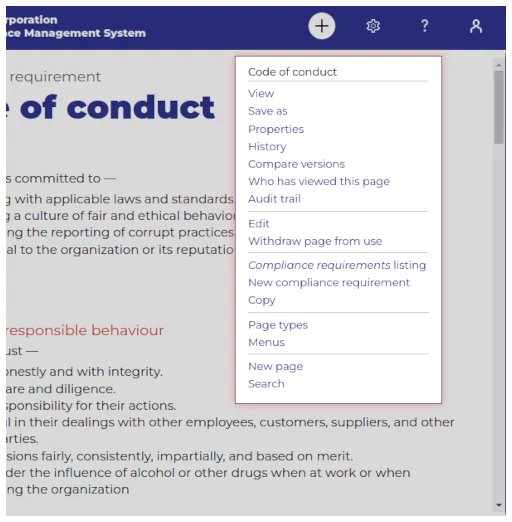
Traditional documentation is often encumbered with technical metadata such as approval records and the document history: essential for document control and audit but of no value to the ordinary end-user. Phrontex keeps the metadata out of the way of normal users.
Phrontex metadata includes:
There is an audit trail for each item in the Phrontex system — pages, users, alert settings, menu definitions — showing when and by whom the item was viewed, updated, and approved.
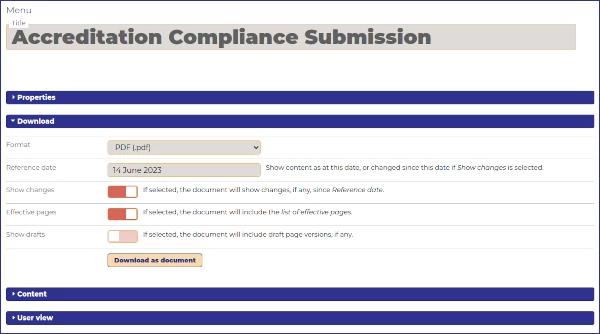
Sometimes a physical document is what you need. Any page or selection of pages in your Phrontex system can be downloaded in any of the common document file formats such as Word, PDF, or plain text.
Each page is assigned to a position in the organization chart. The person holding the position is accountable for the content of the page: they are expected to ensure that the content is always complete, correct, up-to-date, consistent with policies and compliance requirements, and communicated to the people who need it.
The accountable person can be alerted automatically when the page is due for review. It’s good practice to review all content regularly; in some jurisdictions it’s a legal requirement to review safety procedures at least annually; any many organizations stipulate that all policies should be reviewed annually. Phrontex can send reminders as well as escalated follow-ups for the overdues.
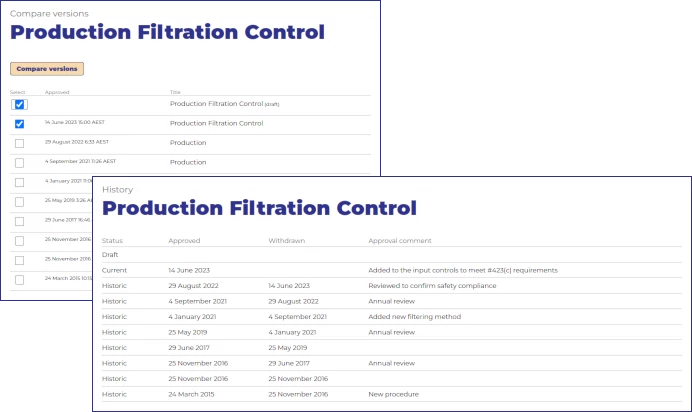
You have a full history of each page, with immediate access to all the historic versions and records of when and by whom the page was approved and when it was superseded.
You can compare any two versions, to see what’s changed.
Pages can be withdrawn from use rather than deleted. This removes the page from public view (as far as normal users are concerned it has been deleted) but its archive is retained. The page can be retrieved if necessary. This can be important for legal purposes.
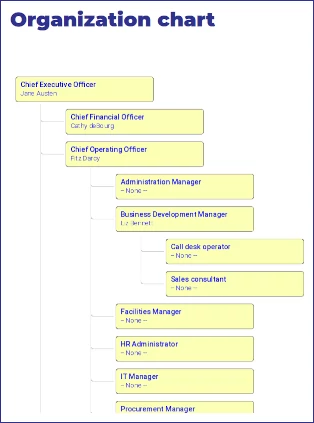
You can create a graphic organization chart to insert in any page, constructed automatically from the Reports to value for each position page. The chart is updated automatically if a position is added, removed, or updated.
The organization chart functionality can be used for any page type: for example to create a chart of the hierarchy of divisions and departments, or the legal entities within a corporate group.
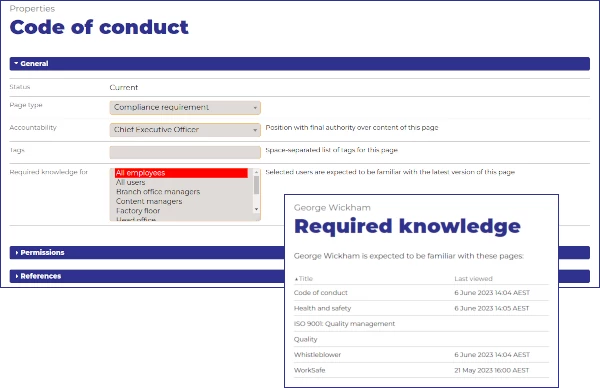
Content provided to your people can be divided into information they may need access to while they are working, and required knowledge: things they need to know in order to be working at all.
Required knowledge typically includes emergency procedures, safety rules, and the code of conduct.
In Phrontex you can flag any page as required knowledge for any or all users, then monitor whether users are staying up-to-date.